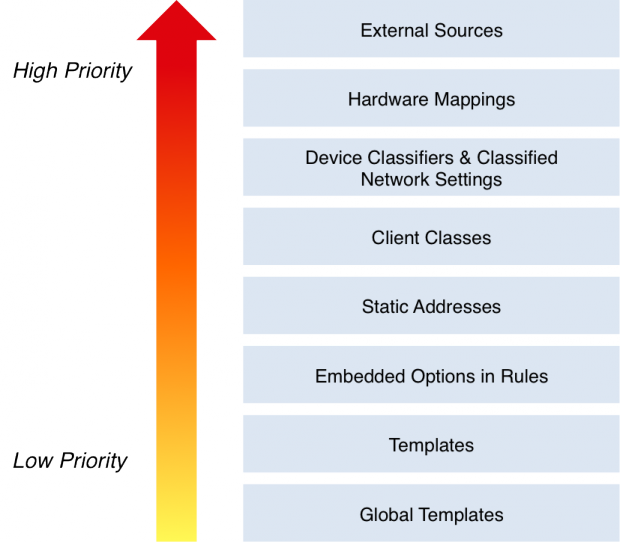Published on 15 Apr 2014
Solution:
Broadband Command Center addresses this issue by giving you the flexibility to compose options from different objects and customize options using internal or external data.
Externally, the solution’s DHCP service can integrate directly with LDAP or SQL databases to provide values from external sources.
Internally, Broadband Command Center can compose DHCP options for large sets of devices in a number of ways, including:
- Global templates
- Embedded subnet options
- Device classifications
For more unique situations, membership-based client classes can be used to uniquely identified devices using hardware mappings.
This means that as an administrator, you have the ability to provision devices using different DHCP options as required.
How DHCP Options Work in Broadband Command Center:
Global Options
At the global level, DHCP options can be configured once in Broadband Command Center and then guaranteed to reach all devices using the system-wide defaults or global template container.
Rule Options
Rules can provide options that are filtered at a network level. For example, DNS Servers or Time Servers.
Class and Classifier Options
Entire related sets of devices can receive options based on Client Classes and Device Classifiers.
Device Options
At the individual device level, hardware mappings allows for particular options to be sent to a specific device.
External Options
Integration with external sources allow for external control of option values.
Diagram: Layers of Transparency when Composing Options

Use Cases
Lease Time Use Case
Scenario: An administrator wants to set a default lease time of 30 days for most devices, except CPEs, which would have a lease time of seven days.
Possible Solution: Setting a value of 30 days in the Global Template or System Wide Defaults and then setting seven days in the subnet rule used specifically for CPEs.
Firmware Upgrade Use Case
Scenario: There is a new firmware upgrade available for a specific set of devices or model, and the administrator wants to ensure that all are upgraded.
Possible Solution: Set a client class to match on option 43.10 (vendor) and/or 43.9(model) and ensure the matching device will receive a dynamically generated configuration file that contains the upgrade information.

